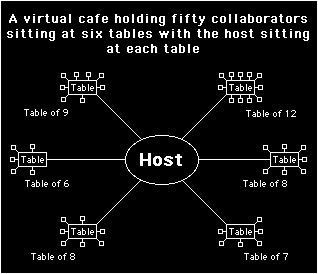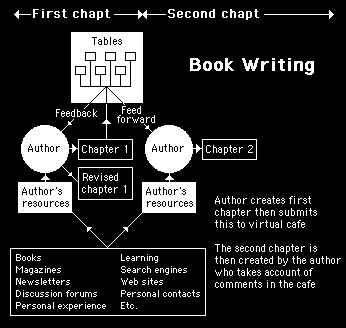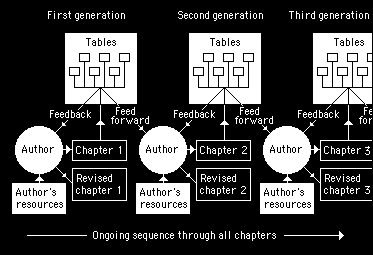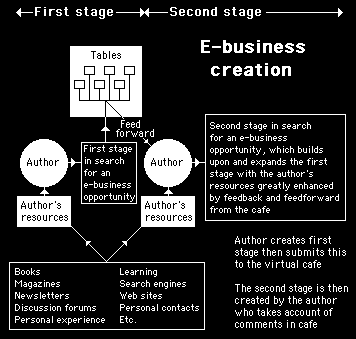
Chapter 1
Fifty collaborators
The concept of the cafe
This idea corresponded to a technique I'd used in the fashion business. The world of fashion is similar in many ways to the world of e-business because it consists almost entirely of information. Fashion is about the wearer transmitting an impression of themselves to others through their choice of clothes. To be successful in this business you don't have to be an original designer, simply a successful communicator who can find out the latest ways for people to identify with a group.
Much of my time was spent in discussions with small groups of people, mostly in cafes, talking to designers, retailers, wholesalers and various groups of people who were representative of my target customers. It was a daily ritual that provided useful information and feedback needed by the workshop to be able to produce sellable, up to the minute, fashion clothes. In a sense, these informal meetings could be considered as part of a creative engine driving the business.
With this scenario in mind, I thought of small e-mail discussion groups as conversations around a table in a virtual cafe. They lasted for a short time and then reconvened at a later time when some of the same people returned and new people joined in the discussion.
It is only a short step from thinking about a single discussion around a table in a cafe to thinking about a cafe full of tables where there is a discussion going on at each table. In a cafe in the real world, it would be possible to sit at only one table at a time. In a virtual cafe, with e-mail discussions around virtual tables, it is possible for the host to sit at every table.
Let's look at this in terms of the fifty people involved in the project of this book. They might be split up into six separate e-mail discussion groups as if they were sitting at six different tables in a cafe having a discussion. This is illustrated in figure 1.1.

Figure 1.1
The initial fifty collaborators are split into six groups. Each group is set up as a separate short term e-mail discussion forum where the host is a participant in each group. This can be likened to a cafe with six tables
From figure 1.1, it is easy to see how the fifty initial participants could be split up as if they were on separate tables in a cafe. This separation into six separate groups, allows discussion to take several different directions. If there are any strong but biased view points dominating a discussion at a particular table they wouldn't be able to spread to them all.
This was the method used to write the first two books in this trilogy. As each chapter in the book was written, it was submitted to each of six tables in a virtual cafe. They would comment on the content and compare it with their ideas on e-business. These comments would then strongly influence the direction and content of the following chapter. This process is illustrated in figure 1.2.

Figure 1.2
As each chapter is written, it is given to each of six tables in a virtual cafe. This produces six separate discussions regarding the content and these discussions influence to content of the next chapter
Using this technique, the books could evolve without any preplanning on the author's part. The content and direction were kept on track by the feedback and feed forward from the cafe discussions. In this way, the book was a result of the synergy between the author and the cafe of readers who could apply their combined thinking to the problems involved in creating e-business solutions. The progression of the process as it proceeds from chapter to chapter is illustrated in figure 1.3

Figure 1.3
By submitting each chapter to the cafe for opinions and comment before writing the following chapter, the entire content of the book is guided and influenced by the many different points of view of the people in the cafe
A full description of using the cafe to write a book is described in "The Ultimate Game of Strategy". It was provided as an example of how customers can be instrumental in designing products.
It was also used as an example of using the strategy of a genetic algorithm to optimise searches for solutions to problems where rational thinking cannot come up with the answers. It was proposed that this technique might be equally useful for searching for viable e-business opportunities. This is explained in figure 1.4.

Figure 1.4
Similar to the way in which the virtual cafe was used to create books, it should be possible to use the same technique to search for viable e-business opportunities.